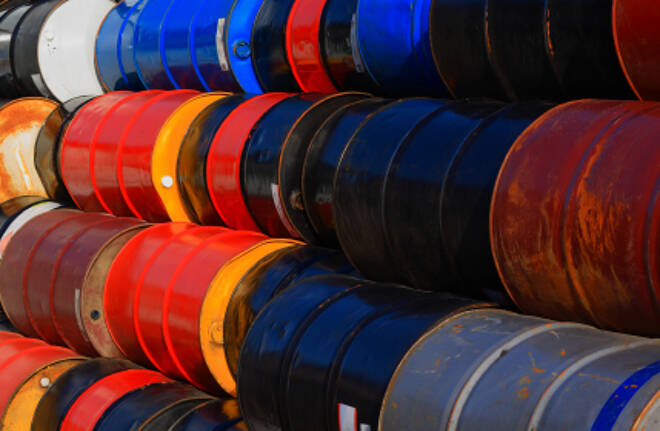Advertisement
Advertisement
Crude Oil Price Analysis for January 16, 2018
By:
Strong Demand Drives Crude Higher
Crude oil prices continued to rise, testing the highs made last week as an increase in rig count that brought the Baker Hughes active rig count up by 10, failed to dampen sentiment. Production in the U.S. declined this past week, but expectations are for higher volumes in 2018. The term structure of crude oil shows heavy backwardation which points to robust demand and higher prices.
Technicals
Crude oil prices broke out last week, hitting a fresh 3-year high near 64.77, a strong prompt demand has created a term structure that is in steep backwardation. Prices will likely continue to climb testing the weekly Fibonacci retracement near 68.22. Support on crude oil prices is seen near the 10-day moving average at 62.64. Momentum on crude oil is positive as the MACD (moving average convergence divergence) histogram prints in the black with an upward sloping trajectory which points to higher prices. The RSI is also climbing reflecting accelerating positive momentum, but the current reading of 79, is well above the overbought trigger level of 70 and could foreshadow a correction.
Demand Looks Strong
Demand also looks strong, although specific figures vary depending on the forecast. OPEC sees demand growing at a brisk 1.5 million barrels a day in 2018, while the IEA expects a softer 1.3 million barrels per day rise this year.
What is not priced in is unforeseen geopolitical fires are which could add some jitters to the market. Production is falling fast in Venezuela, the outages in the North Sea in December tightened supplies a bit, and uncertainty over what to expect from the Washington-Tehran confrontation is helping to push up oil.
Inventories Declined in 2017
Inventories declined in 2017 for the first time in 4-years as refiners are running at near record rates. Crude oil production in the United States is expected to increase in 2018 by more than any other country shooting above the 10-million barrel a day mark. Global consumption of petroleum grew in 2017, and a strong economic backdrop should continue to drive consumption.
Global Inventories Declined in 2017
The EIA, in its Short-Term Energy Outlook forecasts that there was a drop in global inventories of 0.4 million barrels per day in 2017, which is measured by the difference between total world consumption and total world production. The EIA expects global inventories to increase by about 0.2 million barrels a day in 2018 and by about 0.3 million barrels a day in 2019.
Most of the increase in production that will lead to the increase will come from the United States. The EIA expected U.S. crude oil production to increase more than in any other country. U.S. crude oil production is forecast to average 10.3 million barrels a day in 2018, up from the current level of 9.7 million barrels a day. That would be the highest annual average production in U.S. history, surpassing the previous record of 9.6 million barrels a day set in 1970.
Consumption to Increase
The EIA also reports that global consumption of petroleum and other liquid fuels grew by 1.4 million barrels a day in 2017, reaching an average of 98.4 million barrels a day for the year. EIA expects consumption growth will average 1.7 million barrels a in 2018, driven by the countries outside of the Organization for Economic Cooperation and Development. Non-OECD consumption growth is expected to account for 1.2 million barrels a day in 2018. The EIA does not consider how accelerated growth with effect OECD countries which could give a further boost to consumption.
Term Structure
The term structure of WTI is in heavy backwardation, which means there is strong demand for crude oil. The current June versus red-June contract shows a backwardation of $4.52 per barrel. This means there is an incentive to use crude oil now and not store it as you would lose money if you locked in your future sales. This reflects strong demand by refiners for prompt crude oil which is a bullish sign for the petroleum markets.
About the Author
David Beckerauthor
David Becker focuses his attention on various consulting and portfolio management activities at Fortuity LLC, where he currently provides oversight for a multimillion-dollar portfolio consisting of commodities, debt, equities, real estate, and more.
Advertisement
